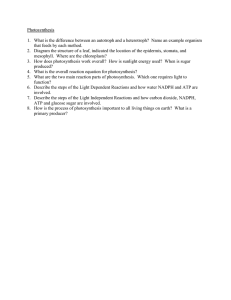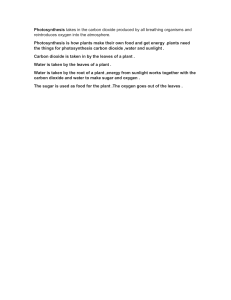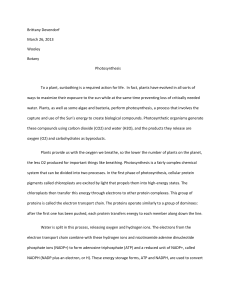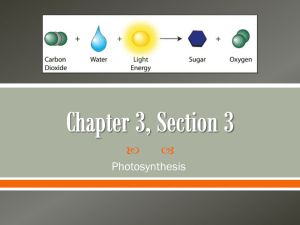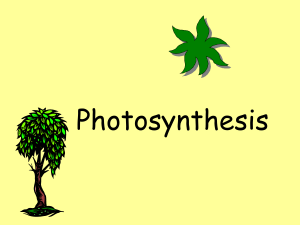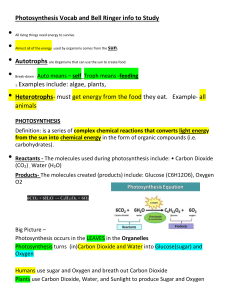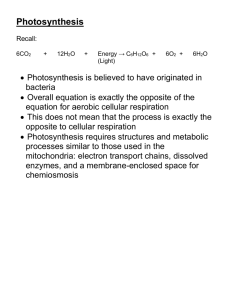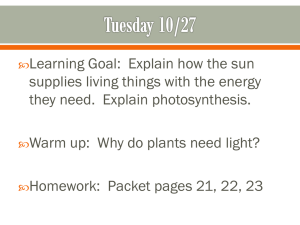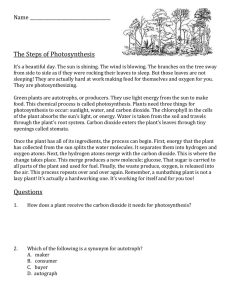Photosynthesis “Cheat Sheet”
advertisement
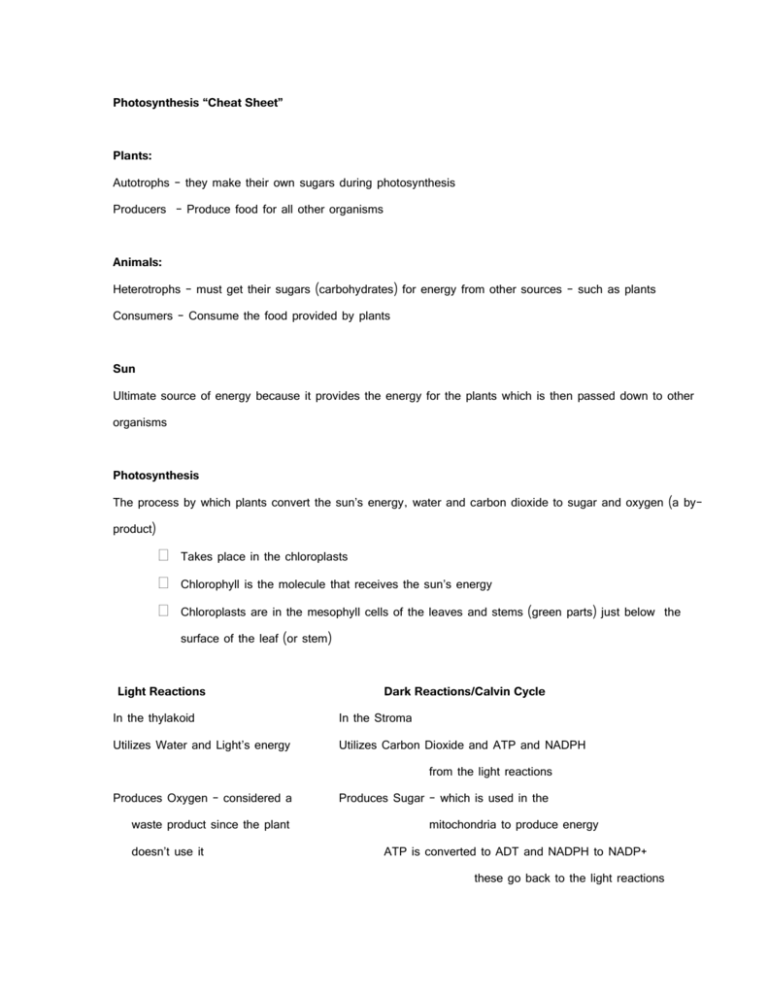
Photosynthesis “Cheat Sheet” Plants: Autotrophs – they make their own sugars during photosynthesis Producers - Produce food for all other organisms Animals: Heterotrophs – must get their sugars (carbohydrates) for energy from other sources – such as plants Consumers – Consume the food provided by plants Sun Ultimate source of energy because it provides the energy for the plants which is then passed down to other organisms Photosynthesis The process by which plants convert the sun’s energy, water and carbon dioxide to sugar and oxygen (a byproduct) Takes place in the chloroplasts Chlorophyll is the molecule that receives the sun’s energy Chloroplasts are in the mesophyll cells of the leaves and stems (green parts) just below the surface of the leaf (or stem) Light Reactions Dark Reactions/Calvin Cycle In the thylakoid In the Stroma Utilizes Water and Light’s energy Utilizes Carbon Dioxide and ATP and NADPH from the light reactions Produces Oxygen – considered a waste product since the plant doesn’t use it Produces Sugar – which is used in the mitochondria to produce energy ATP is converted to ADT and NADPH to NADP+ these go back to the light reactions ADP and NADP+ from the dark Reactions and are recycled We can measure the amount of photosynthesis by measuring the amount of oxygen produced – this will measure light reactions, since oxygen is a product of the light reactions We can measure the amount of sugar produced, which would determine the amount of carbon dioxide taken up, and the effectiveness of the dark reactions
